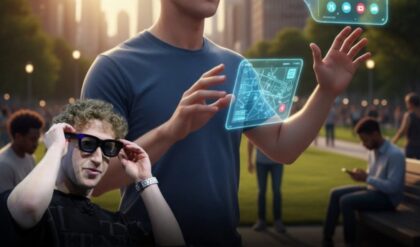With the help of AI company Metaphysic, the Detroit MC gave his alter ego a proper send off.

Eminem at the induction ceremony for Star on the Hollywood Walk of Fame for 50 Cent on Jan. 30, 2020 on Hollywood Boulevard in Los Angeles, CA.Priscilla Grant/Everett Collection
Eminem’s latest album, The Death of Slim Shady (Coupe de Gråce), is the funeral rites for one of rap’s most popular and divisive characters.
Slim Shady, the foul-mouthed alter-ego of Detroit’s most famous MC, was first seen by the masses in the video for “My Name Is,” the debut single from Em’s major label debut, The Slim Shady LP. With a slightly eerie but bemused grin, Slim Shady told kids to “stick nine-inch nails through one of my eyelids.” From there, the character went on to help Eminem, né Marshall Bruce Mathers III, sell millions of albums with an ingenious mix of up-to-the-minute cultural commentary, razor-sharp wit, and a fondness for boundary pushing.
But as rap grew up, Eminem has had to reckon with a changing listenership that increasingly views Slim’s trademark blue bars as inappropriate and offensive. So, now at 51-years-old, Em’s decided that it’s the right time to say goodbye to his beloved alter ego for good. Earlier this year, his team took out an ad in the Detroit Free Press in the form of a fake obituary for Slim Shady that read in part, “His complex and tortured existence has come to a close, and the legacy he leaves behind is no closer to resolution than the manner in which this character departed this world.”
To properly say “peace,” Em decided to not only bring Slim Shady back in song, but in video form, too. “Houdini,” the first single from The Death of Slim Shady (Coupe de Gråce), is a throwback of sorts. Produced by Eminem and Luis Resto, it has the same feeling of Em singles of old. With a playful beat (partially lifted from The Steve Miller Band’s 1982 smash “Abracadabra”) that sounds like the music for a demented carnival ride, “Houdini” could be “Without Me Part 2.” The refrain at the top of the song even drives the point home by quoting that 2002 single: “Shady’s back. Tell a friend.” But what puts it over the top is the comic book-brought-to-life nature of the video, and the inclusion of a young Slim Shady starring alongside a modern-day Eminem.
But just how did Eminem manage to recreate a version of himself from 20 years ago? With the help of AI and Metaphysic. Founded in 2021, Metaphysic offers a suite of tools that allows artists to create and manage digital versions of themselves that they can then manipulate and use for their own projects or license out to third parties for movies, tv shows, or other commercial projects.
Metaphysic Pro, its premiere offering, allows creatives and artists to, as the website says, create a “portfolio of high-quality data assets used to create your AI, voice, and performance.” So, if you were a platinum-selling rapper who wanted to protect your image and likeness against the pending artificial intelligence onslaught, you could register with Metaphysic to build a database of your face, voice, and performance videos from any point in your career. Metaphysic will then help you paper licensing deals with so you remain in control of your AI self.
Right now, the law is trailing behind the state of the art, so there is little to stop companies and rogue actors from exploiting celebrity’s image and and likeness. But if some third party decides to just create a digital version of you without your approval, Metaphysic will alert you to any instances they find on any social networks or video platforms. At a time when actors, musicians, and other creatives are increasingly terrified about unauthorized use of their face or voice, Metaphysic works to provide some sort of protection and control.
“We’re here to help people protect themselves and at least understand what’s going on,” says Ed Ulbrich, chief content officer and EVP of production at Metaphysic. He’s running to catch a flight, but is able to still exuberantly extol the virtues of Metaphysic and AI. “It is not unreasonable to believe that people should own their own likeness. They should own their own biometric data. They should have access to their AI self. They should be able to control it. And if you are an individual that is in command, we don’t own that. We maintain it for them, but it’s up to them if they want to license it to someone.”
On paper, Ulbrich is the last person you would expect to tout the benefits of the AI revolution. He went to art school and traditionally trained to be a painter, but when he got his first glimpse of CGI he knew everything was going to change. After short stint in advertising, he saw James Cameron’s 1991 blockbuster Terminator 2: Judgement Day and realized what he wanted to do with the rest of his life. So, after packing up and moving to L.A., Ulbrich managed to get a job with his filmmaking hero working at Cameron’s Digital Domain VFX shop. After rising to the role of CEO, he left to lead Deluxe Entertainment’s VFX and virtual reality teams.
In the over 30 years he’s worked in VFX, Ulbrich worked on some of Hollywood’s biggest movies including Titanic, The Curious Case of Benjamin Button, Black Panther, and most recently, Top Gun: Maverick. By all measures, he’s had a hell of a career, one that he believes may no longer be accessible to young artists.

Ed UlbrichCourtesy of Metaphysic
“I watched what I love doing back in the ’90s and the early 2000s become factory work,” he says. “The movie business expanded so much. No longer were we sitting with filmmakers in the theater [with] laser pens looking at shots and getting notes and helping craft the movie together with the directors. It became a global business. It became [a business where you had] to have factories all around the planet to get government rebates that get passed back to the studios. I found myself running manufacturing facilities. I never set out to do factory work. I went to art school.”
He believes the tools Metaphysic is building will bring about a “whole renaissance of creativity.” That brings us back to “Houdini.” The video for the lead single from Eminem’s 12th album was made possible by Metaphysic’s Live product — which allows for, among other things, real-time photoreal face swaps driven by live actor performances. The tool allowed Eminem to look 20 years younger without much time (or, according to Ulbrich, money).
Here’s how it works: The Metaphysic team first learns what exactly the scope of the project is, i.e. who is going to be de-aged or have their faceswapped. They then gather all the assets — old photos, videos, and audio samples, etc. — they need to build their models. It takes a little under two months for Metaphysic to train its AI model on all the collected assets. The team tests the model to make sure it looks accurate and works properly before setting up all its production equipment on location. Then it’s showtime.
“If you would have asked me if we could produce a video like this in the amount of time we had with the budget we had two years ago, I would have laughed,” he says.
Resources aside, the most impressive part of the video is just how lifelike and real the younger Slim Shady looks. Everything from his facial features to his movements could be mistaken for a real person. Ulbrich says that’s because it is: “People said, ‘You created Slim Shady!’ We did not create Slim Shady. Let’s be very clear … the real Slim Shady played the real Slim Shady. We just helped by giving him something that makeup couldn’t pull off. We let him play himself but through the interpretation of CGI or any other technology. It’s him playing him.”
To help Em channel his younger self, Metaphysic provided another other its products, the AI Mirror. Built around a huge 85-inch LED monitor, the AI Mirror has a camera and a soft light that work together to allow people to walk up and see live AI projected onto their face. So before the cameras started rolling, Em could see exactly what a young Slim Shady would look like and how he would move to help him better get into character. “You can see yourself 30-40 years ago looking right back at you,” Ulbrich says. “It’s pretty magical to actually go through that.”





